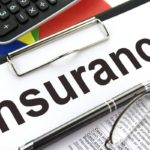Securing Your Future: Insuring Commercial Property in High-Risk Zones
Introduction to Insuring Commercial Property in High-Risk Zones
Overview of the Importance of Commercial Property Insurance
Definition and Purpose of Commercial Property Insurance
Commercial property insurance is an essential shield for business assets against various forms of damage and loss. A standard policy covers the physical assets of a company, including buildings, equipment, inventory, furniture, and even loss of income. This type of insurance is designed to help a business survive the financial implications following unforeseen events, such as natural disasters, theft, and vandalism.
The Increased Need in Disaster-Prone Areas
In areas frequently besieged by the furies of nature, the importance of commercial property insurance skyrockets. Owners of properties in these vulnerable regions face an amplified risk of catastrophic damage, making it crucial to have comprehensive and tailored insurance policies that safeguard against these threats.
B. Statistics on Commercial Property Damage in Disaster Areas
Data Highlighting the Susceptibility to Natural Disasters
Recent studies and reports shed light on alarming trends. A significant proportion of commercial properties situated in disaster-prone areas have encountered some level of damage related to natural calamities. These figures illustrate a worrying narrative for business owners who neglect the need for adequate insurance coverage.
Financial Impact on Businesses Without Appropriate Coverage
A myriad of cases exist where businesses faced financial ruin as a direct consequence of being uninsured or underinsured during a disaster. The absence of a financial safety net via proper insurance can leave a commercial venture exposed to overwhelming repair costs or, worse, complete operational shutdown.
Objectives of the Blog Post
To Educate Property Owners on the Risks
The primary aim of this discussion is to spotlight the risks associated with owning commercial property in areas prone to disasters. We strive to convey the gravity of these risks and the potential repercussions on your livelihood.
To Guide in Selecting the Right Insurance for Their Needs
Furthermore, this post seeks to navigate you, the property owner, through the intricate landscape of commercial property insurance. Our goal is to empower you with knowledge and foresight, enabling you to make informed decisions regarding the protection of your commercial assets.
As we’ve laid the groundwork for understanding the critical role of insurance in disaster-prone areas, let’s dive deeper into the specifics. Stay tuned as we proceed to Understanding Risks in Disaster-Prone Areas, where we will explore the types of disasters likely to strike and the measures you can take to assess and mitigate these threats to your commercial property.
Understanding Risks in Disaster-Prone Areas
Disaster-prone areas present unique challenges for commercial property owners. The key to successful navigation through these challenges lies in understanding the risks and preparing accordingly.
Identifying Types of Disasters and their Impact on Property
List Common Natural Disasters by Region
Each region comes with its own set of natural calamities. Whether it’s the earthquakes of California, the hurricanes of the Gulf Coast, or the floods of the Midwest, understanding the specific disasters your area is prone to is the first step in risk management.
- Earthquakes can lead to structural damage, ground movement, and subsequent fires due to ruptured gas lines.
- Floods often result in pervasive water damage, mold growth, and compromised building foundations.
- Hurricanes bring about wind damage, flooding, and prolonged business interruptions.
Discuss the Potential Damage Caused by Each Type
In-depth insight into the consequences of these natural disasters helps in making informed decisions about the coverage you need. For instance, while property insurance may cover wind damage, it often does not include flood damage, which requires separate coverage.
Risk Assessment for Commercial Properties
How to Evaluate the Level of Risk for Your Property
Conducting a thorough risk assessment involves evaluating the location, construction materials, building age, and compliance with current building codes. Professional assessments can help identify vulnerabilities and recommend risk-reducing measures.
Importance of Local Building Codes and Disaster Preparedness Planning
Building codes are designed to increase a structure’s resistance to natural disasters. Staying in compliance and even going beyond these codes can significantly lower your property’s risk profile.
The Financial Consequences of Uninsured Losses
Case Studies of Businesses Impacted by Natural Disasters
Learn from the past. Case studies of businesses that suffered uninsured losses offer invaluable lessons. They highlight the importance of having adequate insurance that aligns with the actual risks faced by your property.
Long-Term Financial Effects on Uninsured or Underinsured Property
Lacking insurance or being underinsured can lead to financial disaster, potentially resulting in bankruptcy or permanent closure. Understanding these risks provides a stark wake-up call for action.
Assessing and embracing the risks are vital steps in protecting your commercial property. But what about the actual protection? Next, we will discuss the Key Features of Disaster-Resilient Commercial Property Insurance. Knowing the options available and the features of robust insurance policies will help secure your investment when disaster strikes.
Key Features of Disaster-Resilient Commercial Property Insurance
Protecting your investment against natural disasters requires not just any insurance policy, but one that specifically addresses the elevated risks faced by commercial properties in disaster-prone zones.
A. Coverage Options for Disaster-Prone Areas
Explanation of Typical Coverage in Standard Policies
Standard commercial property policies generally cover a range of perils, including fire, explosion, theft, and vandalism. While these are critical coverages, they may fall short in areas where the threat of natural disasters looms large.
Additional Coverage Options Pertinent to Disaster-Prone Areas
To bridge this gap, insurers offer additional options tailored to high-risk zones. Understanding these offerings is vital:
- Flood Coverage: Often excluded from standard policies, it’s a must-have in flood-prone regions.
- Earthquake Coverage: Particularly relevant in seismically active areas.
- Windstorm Coverage: Crucial for properties in hurricane belts.
B. Specialized Insurance Products and Endorsements
Disaster-prone regions benefit from specialized products designed to fill common policy gaps.
Flood Insurance, Earthquake Insurance, Business Interruption Insurance
Policies like National Flood Insurance Program (NFIP) policies or standalone earthquake insurance can be the difference between recovery and ruin. Business interruption insurance, meanwhile, can protect against the loss of income during the rebuilding process.
Customizable Endorsements for Specific Needs
Beyond standard policies, consider endorsements—add-ons to your policy—that provide additional protection for unique risks associated with your property or business operations.
C. Understanding Policy Exclusions and Limitations
It’s just as important to know what your policy does not cover as it is to know what it does cover.
Common Exclusions in Commercial Property Policies
Typical exclusions to watch for include damages due to earth movement (like landslides or earthquakes) and water damage from floods.
How to Address Loopholes with Riders or Additional Policies
Take time to address these exclusions with specific riders or additional policies. Ensure you have a complete shield against the unique risks your business faces.
Insurance policies are dense, often filled with industry jargon that can be hard to navigate. As disaster-prone areas necessitate more robust and intricate coverage, the next section will focus on Proactive Strategies for Mitigating Risks. Strategies for planning and response to natural disasters can not only safeguard your property but also ensure the continuity of business operations in the aftermath.
Proactive Strategies for Mitigating Risks
Beyond selecting the right insurance policy, proactive risk mitigation is crucial for commercial property owners, especially in disaster-prone areas. Implementing strategic measures can significantly reduce potential damage and ensure swift recovery following a disaster.
A. Disaster Planning and Business Continuity
Developing a Comprehensive Emergency Response Plan
Every commercial establishment should have a detailed emergency plan. This plan must include evacuation routes, safety protocols, and a communication strategy to keep employees informed during and after a disaster.
Business Continuity Strategies to Minimize Downtime After a Disaster
Business continuity planning is essential to resume operations promptly. Identifying key business functions, backing up data remotely, and establishing alternative working locations are strategies that can minimize financial losses during the recovery period.
B. Structural Mitigation Techniques
Upgrades to Improve Resilience Against Natural Disasters
Investing in structural enhancements like retrofitting, reinforcement of buildings, and the use of disaster-resistant construction materials can prevent or minimize physical damage to a property.
Importance of Adhering to or Exceeding Local Building Codes
Local building codes are often the minimum standard for construction and resilience. For enhanced protection, it’s advisable to exceed these codes where possible, especially in disaster-prone areas.
C. Financial Preparedness Measures
Creating a Financial Safety Net
Establish an emergency fund, accessible lines of credit, and maintain adequate cash reserves to cover immediate expenses in the aftermath of a disaster. Financial preparedness can make or break the future of a business when faced with unexpected repairs or reconstruction needs.
Regular Reviews and Updates of Insurance Coverage
It’s crucial to regularly review your insurance policies and keep them updated with any changes in your property value, risk factors, or business operations. This ensures your coverage remains relevant and comprehensive.
While proactivity in planning and structural preparedness is fundamental, these measures must be complemented by a thorough understanding of your insurance policy and a collaborative relationship with your insurer. Coming up next in Choosing the Right Insurance Partner and Policy, we’ll delve into the critical factors to consider when aligning with an insurance provider, understanding the terms of your coverage, and ensuring your policy evolves with your business.
Choosing the Right Insurance Partner and Policy
The final piece of the puzzle in insuring commercial property in high-risk areas is selecting a reliable insurance partner and policy that aligns with your unique needs and the peculiarities of your location.
A. Selecting an Insurance Provider with Disaster Area Expertise
Criteria for Choosing an Insurer
Prioritize insurers with a proven track record of financial stability, efficient claims processing, and outstanding customer service. These factors are crucial for a seamless experience when making a claim, especially during trying times after a disaster.
Evaluating Insurer’s Experience in Disaster-Prone Regions
An insurer with experience in disaster-prone regions has first-hand knowledge of the risks and the specific needs of properties in these areas. Their expertise can be invaluable when customizing your coverage to adequately address these risks.
B. Understanding Policy Terms and Cost Considerations
How to Read and Understand Your Insurance Policy
Routinely review and comprehend the terms of your policy to avoid any surprises when a claim needs to be made. Understand the extent of coverage, limits, deductibles, and any exclusions that might impact your specific situation.
Discussion of Deductibles, Premiums, and How to Balance Cost with Coverage
Striking the right balance between the cost of insurance and the level of coverage is crucial. Evaluate the trade-offs of higher deductibles versus higher premiums to ensure you are getting the best value without compromising on protection.
C. Periodic Review and Adjustment of Your Coverage
Importance of Annual Insurance Reviews
Ongoing risk profiles and business growth can dictate the need for adjustments in your coverage. Annual reviews are essential to keep your policy relevant and comprehensive.
Adjusting Coverage in Response to Changing Risk Profiles or Business Growth
As your business evolves or your property undergoes changes, it’s imperative to reflect these changes in your coverage to maintain adequate protection.
Conclusion
In conclusion, insuring commercial property in high-risk areas demands a strategic and proactive approach. From understanding the risks posed by natural disasters to selecting the right insurance partner and policy, every step is pivotal in fortifying your assets against potential devastation.
Remember, the safety and continuity of your business are not worth compromising. Seek expert advice if needed, and ensure your insurance coverage is comprehensive, reflecting the unique risks faced by your property. Lastly, take action today to safeguard your investments and secure a resilient future.







